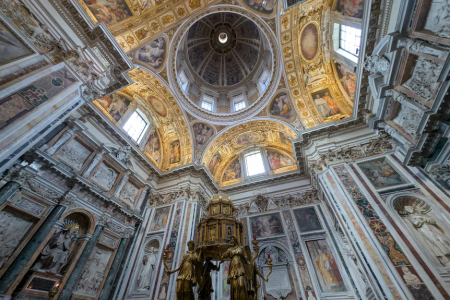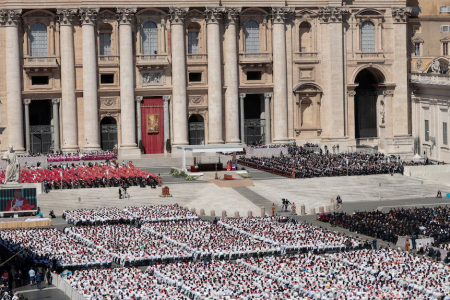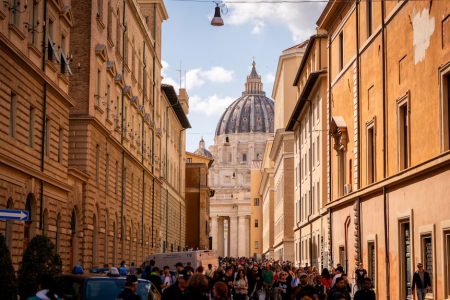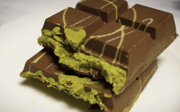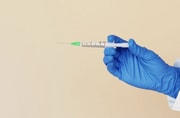Vatican deploying high-tech measures during papal vote to ensure secrecy
By
ABC News
- Replies 1
There is a high price to pay for anyone who breaks an oath to protect the "absolute and perpetual secrecy" of the upcoming papal vote.
Anyone — from priests, cooks, cleaners, drivers, guards and tradesmen — who leaks what they may see or hear at the conclave meeting faces automatic excommunication from the Catholic Church.
The conclave, taking place in the Sistine Chapel in Rome, is a meeting of 133 cardinals from around the world to determine who will take over leadership of the Catholic Church from Pope Francis.
It is a process steeped in history, but its organisers have had to implement thoroughly modern solutions to prevent outside influence from infiltrating the process, or the media leaking deliberations before the new pope is declared.
All cardinals will have their electronic devices confiscated for the duration of the conclave, and they will only be returned once the process is complete.
Vatican spokesperson Matteo Bruni said the secrecy and sequestering of the cardinals was imperative to the process.
He said the matter went "beyond just technical questions," but was a "process united also with prayer, with meditation, with thought about who the person could be whom the Lord has identified as the pope of Rome".
The exact security measures are a closely kept secret known only to top Vatican officials, but some experts say these could include jamming devices, anti-drone defences and even shutting off nearby phone towers.
Here's what we know so far.
Jamming devices
There have been reports about the use of jamming devices during conclave meetings since 2013.
A new floor is being installed to minimise the number of stairs the cardinals will need to take in the chapel — with many of those invited over the age of 70 — and some officials have reportedly said the jamming devices have been placed underneath.
However, others dispute this, saying it was more likely the devices would be installed near the upper windows of the chapel.
An Italian media outlet reported they were most likely to be "military-grade" jammers, which would disturb frequencies and make it near impossible to reach anyone within their transmission radius.
While effective against mobile phones, it would also scramble information received by a microphone, a radio or a computer.
Back in 2013, it was widely reported a Faraday cage had been installed to specifically shield the chapel against electromagnetic fields.
No-one from the Vatican has ever confirmed the use of the measure.
Anti-drone defences
The chapel has gone old school to prevent drones spying on the meeting, placing opaque film over the glass.
However, there are other levers the Vatican can pull to ensure no drones infiltrate the meeting.
Measures taken during Pope Francis's funeral included enforcing a no-fly zone for the duration of the service.
Italian media outlets reported authorities had "anti-drone bazookas" ready to deploy that could neutralise any drones that breached the no-fly order.
City officials have not confirmed whether this technology will be available throughout the conclave, but one Vatican source said the city-state had its own systems to detect drones if need be.
Mobile phone towers shut off
The Office of the Governor of Vatican City reportedly sent out a communication on Monday warning mobile phone towers in Vatican City would be deactivated at 3pm, local time, on Wednesday.
The shutdown will not extend to St Peter's Square, where thousands typically gather to anticipate the election of the new pope, but there will be security with metal detectors in the crowd as an additional measure.
The shutdown will happen an hour and a half before the cardinals are sequestered and will continue until the end of the conclave.
The consequences
The oath of secrecy around the conclave was developed by St John Paul II in 1996 and was further tightened by Pope Benedict XVI in 2013.
The oath declares unless a person receives "special faculty" given by the newly elected pontiff or successors, they must observe and protect the secrecy around the conclave.
Pope Benedict XVI made it explicit in his 2013 revisions that anyone who breached the oath would be excommunicated.
Written by Hannah Murphy, ABC News.
Anyone — from priests, cooks, cleaners, drivers, guards and tradesmen — who leaks what they may see or hear at the conclave meeting faces automatic excommunication from the Catholic Church.
The conclave, taking place in the Sistine Chapel in Rome, is a meeting of 133 cardinals from around the world to determine who will take over leadership of the Catholic Church from Pope Francis.
It is a process steeped in history, but its organisers have had to implement thoroughly modern solutions to prevent outside influence from infiltrating the process, or the media leaking deliberations before the new pope is declared.
All cardinals will have their electronic devices confiscated for the duration of the conclave, and they will only be returned once the process is complete.
Vatican spokesperson Matteo Bruni said the secrecy and sequestering of the cardinals was imperative to the process.
He said the matter went "beyond just technical questions," but was a "process united also with prayer, with meditation, with thought about who the person could be whom the Lord has identified as the pope of Rome".
The exact security measures are a closely kept secret known only to top Vatican officials, but some experts say these could include jamming devices, anti-drone defences and even shutting off nearby phone towers.
Here's what we know so far.
Jamming devices
There have been reports about the use of jamming devices during conclave meetings since 2013.
A new floor is being installed to minimise the number of stairs the cardinals will need to take in the chapel — with many of those invited over the age of 70 — and some officials have reportedly said the jamming devices have been placed underneath.
However, others dispute this, saying it was more likely the devices would be installed near the upper windows of the chapel.
An Italian media outlet reported they were most likely to be "military-grade" jammers, which would disturb frequencies and make it near impossible to reach anyone within their transmission radius.
While effective against mobile phones, it would also scramble information received by a microphone, a radio or a computer.
Back in 2013, it was widely reported a Faraday cage had been installed to specifically shield the chapel against electromagnetic fields.
No-one from the Vatican has ever confirmed the use of the measure.
Anti-drone defences
The chapel has gone old school to prevent drones spying on the meeting, placing opaque film over the glass.
However, there are other levers the Vatican can pull to ensure no drones infiltrate the meeting.
Measures taken during Pope Francis's funeral included enforcing a no-fly zone for the duration of the service.
Italian media outlets reported authorities had "anti-drone bazookas" ready to deploy that could neutralise any drones that breached the no-fly order.
City officials have not confirmed whether this technology will be available throughout the conclave, but one Vatican source said the city-state had its own systems to detect drones if need be.
Mobile phone towers shut off
The Office of the Governor of Vatican City reportedly sent out a communication on Monday warning mobile phone towers in Vatican City would be deactivated at 3pm, local time, on Wednesday.
The shutdown will not extend to St Peter's Square, where thousands typically gather to anticipate the election of the new pope, but there will be security with metal detectors in the crowd as an additional measure.
The shutdown will happen an hour and a half before the cardinals are sequestered and will continue until the end of the conclave.
The consequences
The oath of secrecy around the conclave was developed by St John Paul II in 1996 and was further tightened by Pope Benedict XVI in 2013.
The oath declares unless a person receives "special faculty" given by the newly elected pontiff or successors, they must observe and protect the secrecy around the conclave.
Pope Benedict XVI made it explicit in his 2013 revisions that anyone who breached the oath would be excommunicated.
Written by Hannah Murphy, ABC News.
Last edited:

